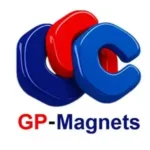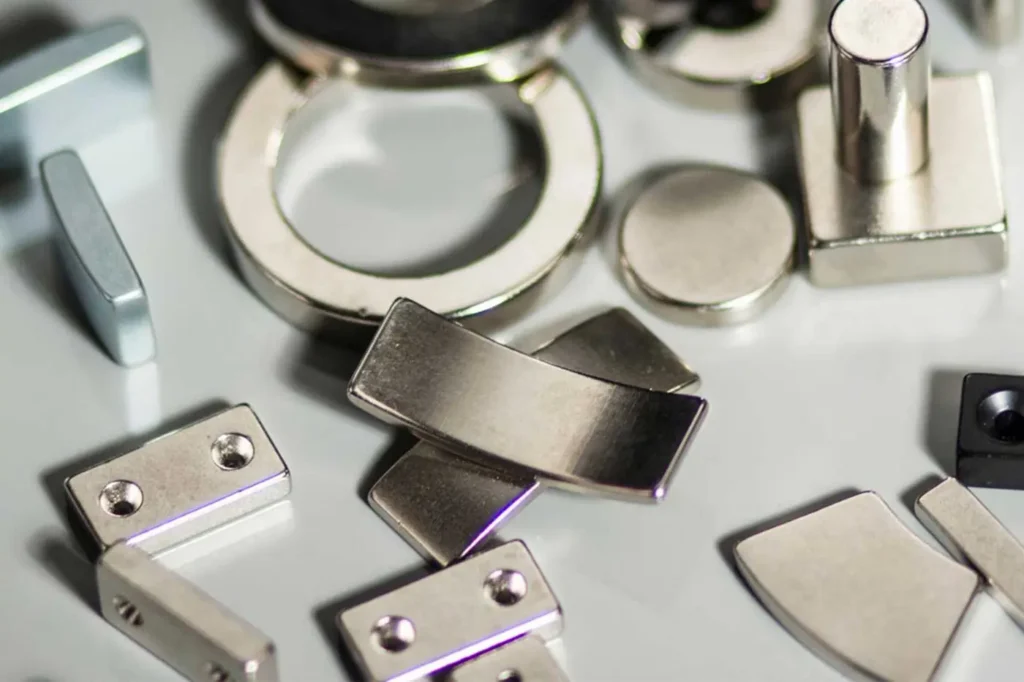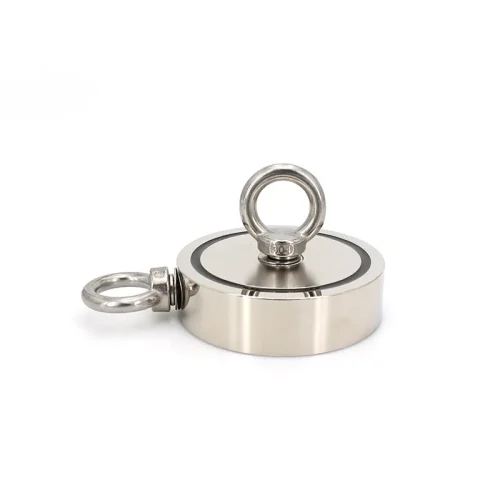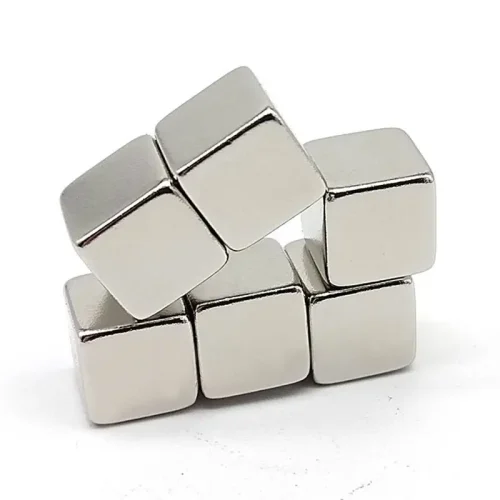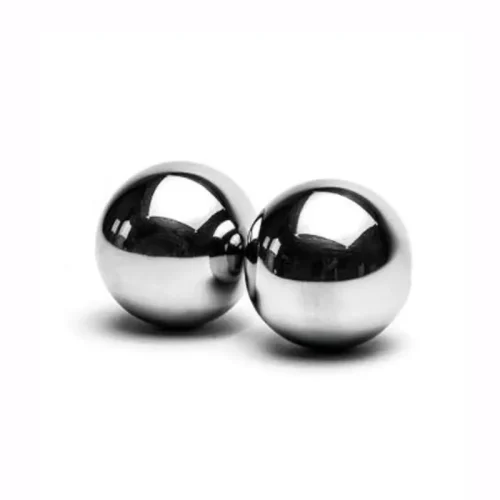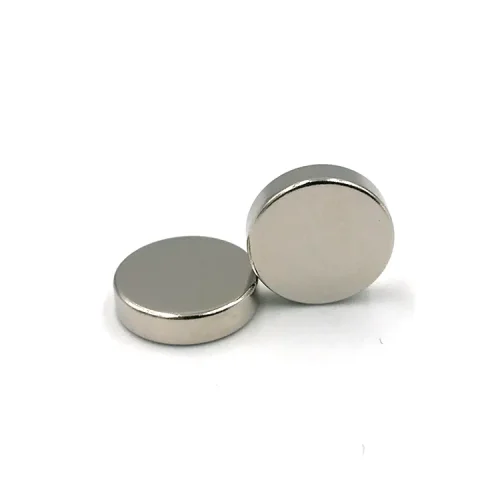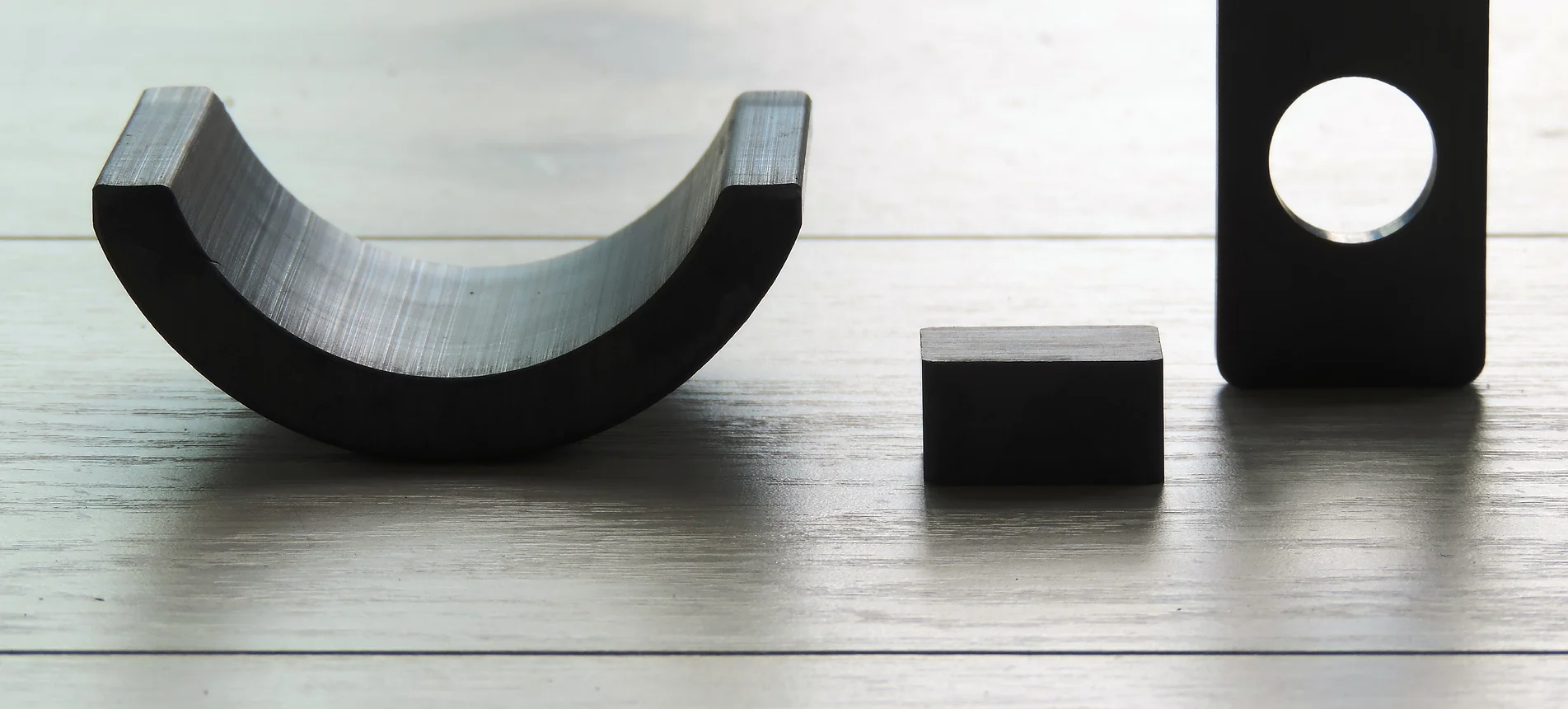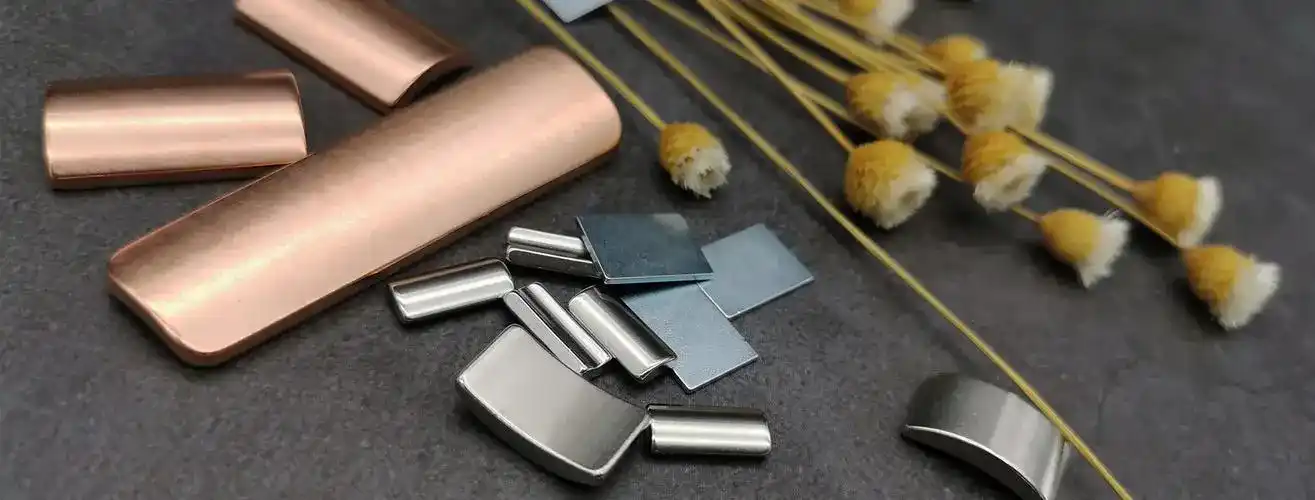Table of Contents
About ferrite magnets
Let’s explore the captivating world of iron-oxygen magnets! In ancient China, natural ferrite (Fe3O4) was discovered, leading to the invention of the compass. Fast forward to 1952, when engineers crafted magnets from ferrite, giving them the freedom to shape magnets as desired. These ferrite magnets produced stronger magnetic fields than nature and became popular due to their affordability and power.
Known as hard ferrite magnets or ferromagnets, they were made of strontium or barium ferrite. In 1933, the Tokyo Institute of Technology created cobalt ferrite-based OP magnets for radio technology. Researchers worldwide delved into ferrite materials, and in 1935, a physicist named J.L. Snook developed soft magnetic ferrites with a zinc-infused spinel structure. Significant advancements continued, resulting in the creation of garnet-structured ferrites by E.F. Berto and F. Foura in 1956.
This journey highlights the fascinating evolution of ferrite magnets, showcasing their shapeability and enhanced magnetic properties.

What is a ferrite magnet and how to make it?
Ferrite magnets, also known as magnetic porcelain due to their ceramic-like production process and appearance, are captivating creations that possess remarkable properties. These permanent magnets, crafted predominantly from SrO or BaO and Fe2O3, boast a composition of barium and strontium iron. Not only do they exhibit exceptional resistance to demagnetization, but they also offer the advantage of being cost-effective. However, their rigidity and brittleness necessitate specialized mechanical processing.
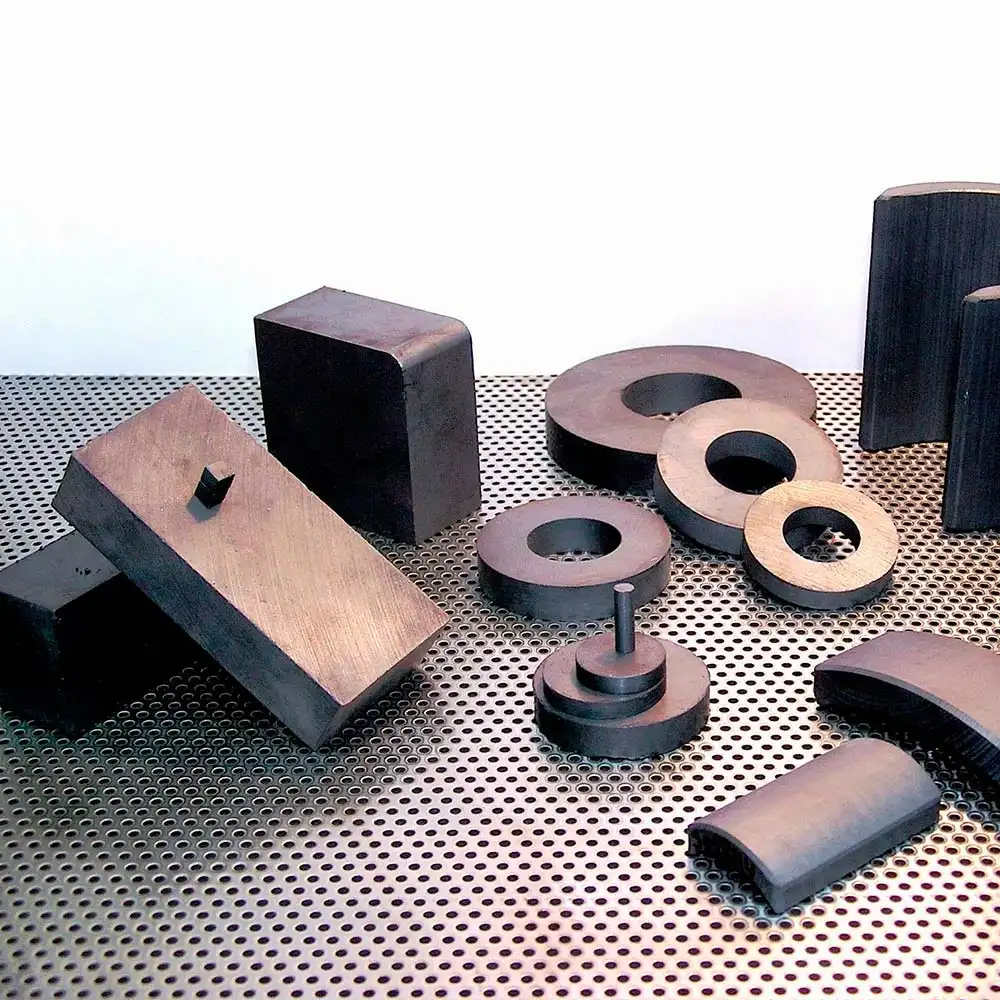
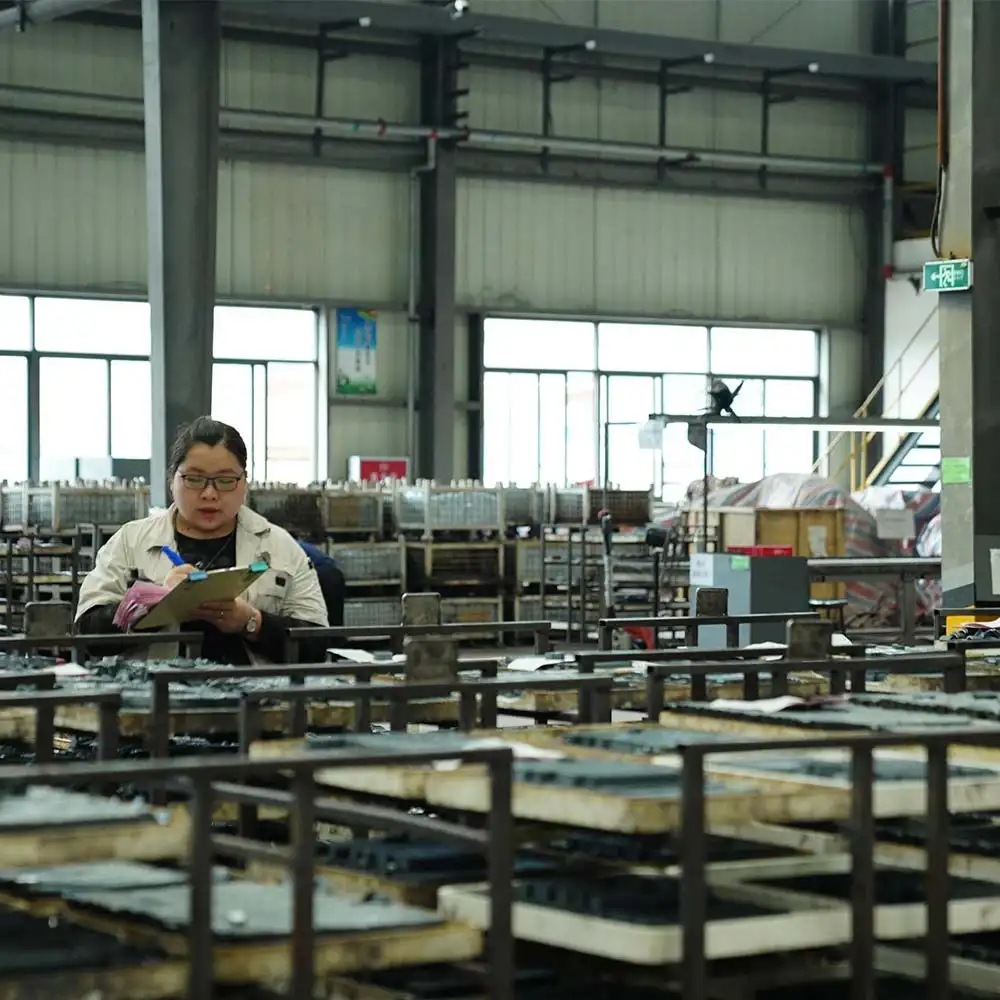
Creating a ferrite magnet involves a meticulous manufacturing process, which I will now outline:
- Weighing and Mixing: The raw materials used for ferrite magnets include Fe2O3, BaCO3, SrCO3, and CaCO3, carefully measured according to a precise formula. Accurate weighing and thorough mixing of these materials are crucial to ensure the desired magnetic properties are achieved. This step is performed using specialized equipment, and achieving homogeneity in the mixture components is essential.
- Granulation: Before pre-sintering, the mixture undergoes granulation to facilitate a smooth solid phase reaction process. The solution is introduced into the mixture, and the particle size of the resulting pellets influences pre-sintering time.
- Pre-sintering: The purpose of pre-sintering is to ensure a complete solid phase reaction of the raw materials. This process transforms most of the raw material into the ferrite phase, improving deformation, shrinkage, and density. The pre-sintered powder obtained can serve as a raw material for sintered magnets, bonded magnets, and wave absorbing materials. Nowadays, many ferrite manufacturers directly purchase pre-sintered powder.
- Ball Milling: The pre-sintered material is crushed into a fine powder using ball mill equipment, employing steel balls and water for the crushing process.
- Molding: Ferrite magnets are categorized as isotropic or anisotropic, depending on their properties. The molding process is carried out using either the wet or dry method, which demands a high level of technological expertise.
- Sintering: Similar to other sintered magnets, the sintering process significantly impacts the microstructure and magnetic properties of ferrite magnets. This crucial step ensures the desired performance characteristics are achieved.
- Mechanical Processing: Ferrite magnets undergo grinding, polishing, cutting, and punching during mechanical processing. It’s important to note that grinding wheels are used during the cutting process to account for ferrite’s insulating nature.
The captivating realm of ferrite magnets unveils a synthesis of exceptional properties, cost-effectiveness, and meticulous craftsmanship. Their remarkable resistance to demagnetization, coupled with the rigidity of their composition, sets them apart as magnetic wonders in the world of materials science.
The advantages of ferrite magnets
The advantages of ferrite magnets are truly remarkable, making them a reliable choice for various applications.
Firstly, their exceptional magnetic properties give them a strong magnetic field, allowing them to attract and hold objects with great efficiency. This impressive magnetic strength enables ferrite magnets to be used in motors, speakers, and magnetic separators, among many other devices.
Secondly, their cost-effectiveness sets them apart from other magnet types. Ferrite magnets are significantly more affordable to produce compared to their counterparts, making them an ideal choice for manufacturers aiming to maximize their budget without compromising on performance.
Additionally, these magnets boast excellent resistance to corrosion, ensuring their longevity and reliability even in harsh environments. Their resistance to demagnetization also guarantees stable and consistent performance over time, reducing maintenance costs and enhancing overall operational efficiency.
Lastly, ferrite magnets possess a high coercivity, meaning they can withstand high temperatures without losing their magnetic properties. This thermal stability makes them suitable for applications where heat is a concern, such as automotive components and electrical equipment.
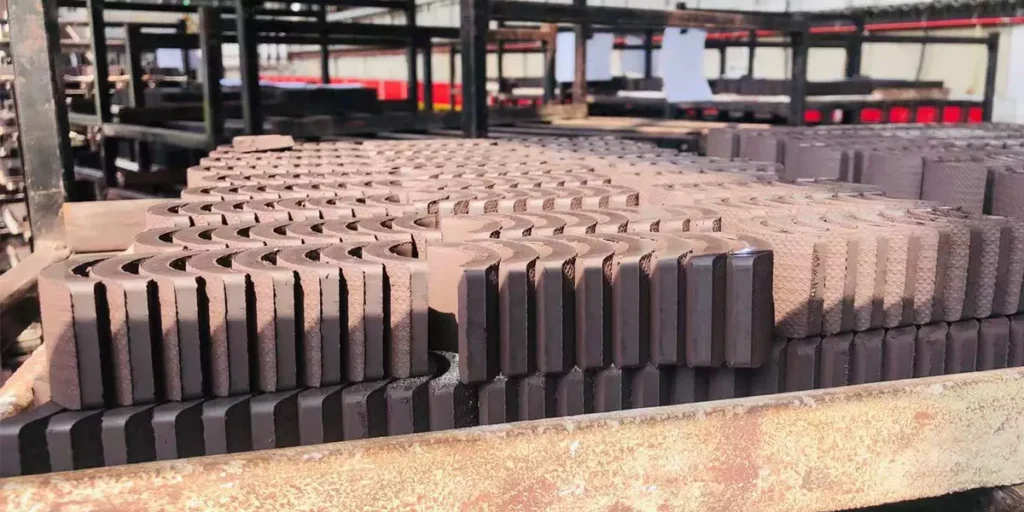
The Disadvantages of ferrite magnets
While ferrite magnets possess several advantageous features, it is crucial to acknowledge their inherent limitations in order to make informed decisions regarding their usage.
First and foremost, one cannot overlook their relatively lower magnetic strength compared to other magnet types. While ferrite magnets boast cost-effectiveness, their magnetic field intensity falls short, hindering their ability to generate substantial attractive forces.
Furthermore, the brittle nature of ferrite magnets necessitates careful handling and protection, as they are prone to chipping and cracking under excessive stress. This fragility restricts their applicability in high-impact or dynamic environments where durability is paramount.
Additionally, ferrite magnets exhibit limited temperature resistance, rendering them unsuitable for applications that demand optimal performance in extreme temperature conditions. It is essential to acknowledge these drawbacks in order to make informed decisions when selecting magnets for specific purposes.
The application of ferrite magnets.
The application of ferrite magnets is incredibly versatile and widely used, particularly in various types of motors. Personally, I find ferrite magnets to be an exceptional choice due to their remarkable properties. With a relative magnetic permeability that can reach several thousand, they exhibit a strong magnetic field and excellent magnetism.
Furthermore, their high resistivity, which is 1011 times that of metal, ensures minimal eddy current loss, making them ideal for high-frequency electromagnetic devices. Ferrite magnets find their place in an array of motorized systems, such as motorcycle and car starter motors, as well as motors for opening car windows and sunroofs. They are also employed in curtain automatic devices, toy motors, fuel pumps, seat motors, and countless other applications. Their reliability and efficiency make them an invaluable component in various industries.
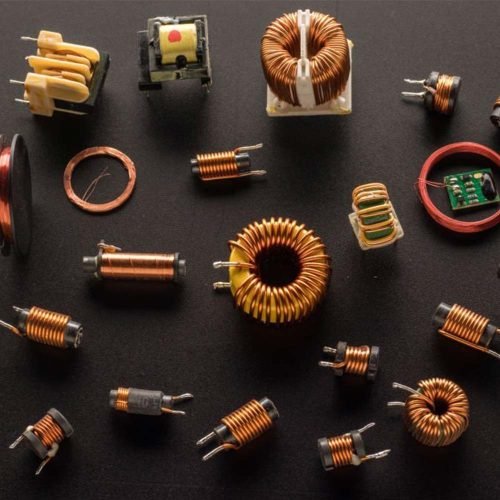
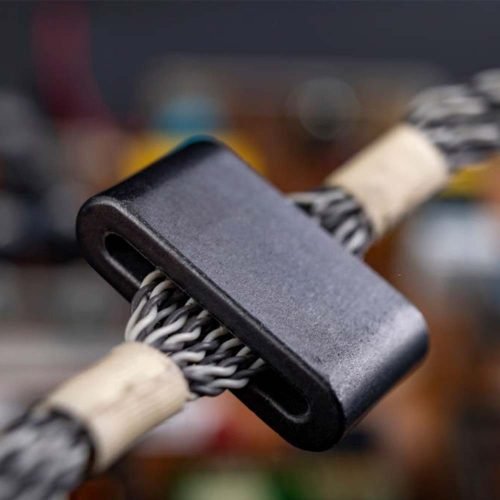
About NdFeB magnets
NdFeB magnets, short for Neodymium Iron Boron magnets, are extraordinary materials in the world of permanent magnets. They are crafted from a remarkable intermetallic compound known as Nd2Fe14B. What sets NdFeB magnets apart is their exceptional magnetic energy product and coercive force, making them indispensable in modern industries and electronic technologies.
By harnessing their high energy density, NdFeB magnets have revolutionized the landscape of equipment design. Instruments, electro-acoustic motors, and magnetic separation devices can now undergo a remarkable transformation: they can be miniaturized, lightened, and slimmed down. Such advancements owe their gratitude to the incredible capabilities of NdFeB magnets.
Every neodymium magnet bears a name that commences with the letter “N,” representing the element neodymium. However, it’s the number following the “N” that holds greater significance, as it denotes the magnet’s maximum energy product—the primary indicator of its strength.
Put simply, a higher maximum energy product value translates to a more potent magnetic field when applied in a given context. The performance grades available for NdFeB magnets range from N35 to N52, conforming to national standards. While N35 is considered the minimum grade, it boasts formidable magnetic performance that satisfies diverse applications. In fact, N35 magnets are the most commonly utilized in the market. Above N35 lies N42, offering a cost-effective solution with heightened performance—20% more magnetic strength than many cheaper N35 grade magnets.
Beyond N42, higher-grade magnets become progressively more expensive without a proportional increase in performance. Take, for instance, N52 magnets, which are twice as costly as N42 magnets while providing only a 20% boost in strength.
Manufacturing NdFeB magnets involves a meticulous powder metallurgy process. This involves a series of steps, beginning with ingredient selection and progressing through smelting, ingot making, powder production, pressing, sintering, tempering, magnetic testing, grinding, pin cutting, electroplating, and concluding with the creation of the finished product.
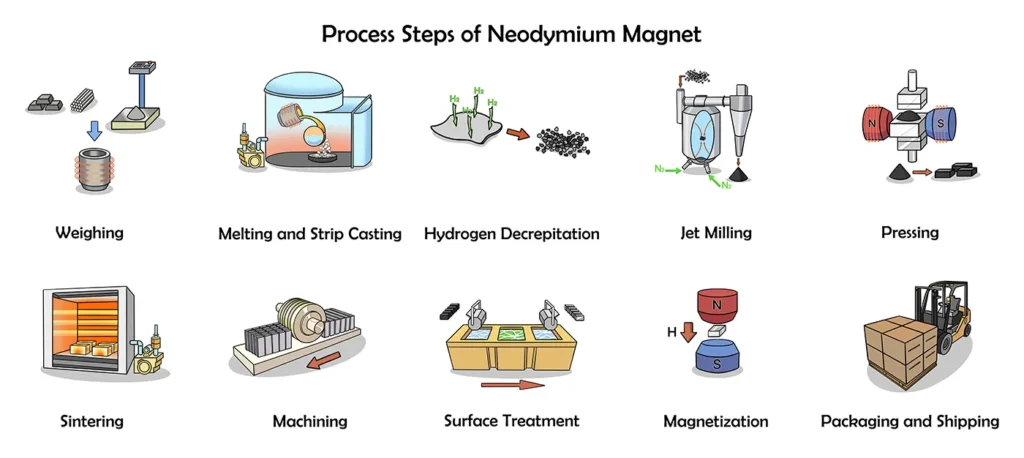
NdFeB magnets, or Neodymium-Iron-Boron magnets, are indeed an extraordinary achievement in the field of magnetic materials. Their unique composition and exceptional magnetic properties have propelled them to the forefront of modern magnet technology.
One of the most remarkable features of NdFeB magnets is their immense magnetic strength. They possess a significantly higher magnetic energy product, or BHmax, compared to other magnet materials like Ferrite. This attribute allows NdFeB magnets to generate powerful magnetic fields, making them invaluable in various applications.
Moreover, NdFeB magnets offer a wide range of grades, sizes, and shapes, providing engineers and designers with unparalleled versatility. These magnets can be precisely machined to meet specific requirements, enabling the creation of compact and efficient devices. Whether it’s for motors, generators, sensors, speakers, magnetic separation systems, or other applications, NdFeB magnets offer an optimal solution.
However, it is important to note that NdFeB magnets are susceptible to surface rusting due to their iron content. To protect them from corrosion, various surface treatments are employed, such as nickel plating, zinc plating, gold plating, or epoxy plating.
The cost-effectiveness of NdFeB magnets compared to other magnetic materials has played a crucial role in their widespread adoption. This affordability, coupled with their exceptional magnetic properties, has made NdFeB magnets an attractive choice for replacing traditional materials like ferrite, Alnico, and SmCo in many applications.
Advantages of NdFeB magnets
NdFeB magnets, also known as neodymium magnets, offer numerous advantages that make them an indispensable component in a wide range of industries.
- Unrivaled Magnetic Strength: NdFeB magnets possess an extraordinary magnetic strength, with a maximum energy product (BHmax) that can reach up to 52 Mega-Gauss Oersteds (MGOe). This superior strength allows them to generate substantial magnetic fields, making them ideal for applications requiring powerful attraction or lifting forces.
- Compact Size and Lightweight: Despite their immense strength, NdFeB magnets have a remarkable ability to maintain their magnetic properties while being comparatively small and lightweight. This compactness is particularly advantageous in industries where space and weight constraints are critical, such as electronics, automotive, and aerospace.
- Wide Temperature Range: NdFeB magnets have excellent temperature stability. They can operate efficiently in a broad range of temperatures, from as low as -40°C to as high as 200°C. This versatility enables their use in environments with extreme temperature conditions, such as automotive, aerospace, and industrial applications.
- Versatility and Customization: NdFeB magnets can be easily shaped into various forms, including discs, cylinders, blocks, and rings, to suit specific application requirements. Additionally, they can be coated with protective layers, such as nickel, zinc, or epoxy, to enhance durability and corrosion resistance, expanding their range of potential uses.
- Cost-Effectiveness: Considering their unparalleled magnetic strength and versatility, NdFeB magnets offer exceptional value for money. Their high magnetic output allows for the design of more compact and efficient devices, reducing material and manufacturing costs while improving overall performance.
- Wide Range of Applications: The outstanding characteristics of NdFeB magnets make them indispensable in numerous industries. They are extensively used in motors and generators, magnetic resonance imaging (MRI) machines, magnetic separators, magnetic bearings, speakers, and many other applications where strong magnetic fields are required.
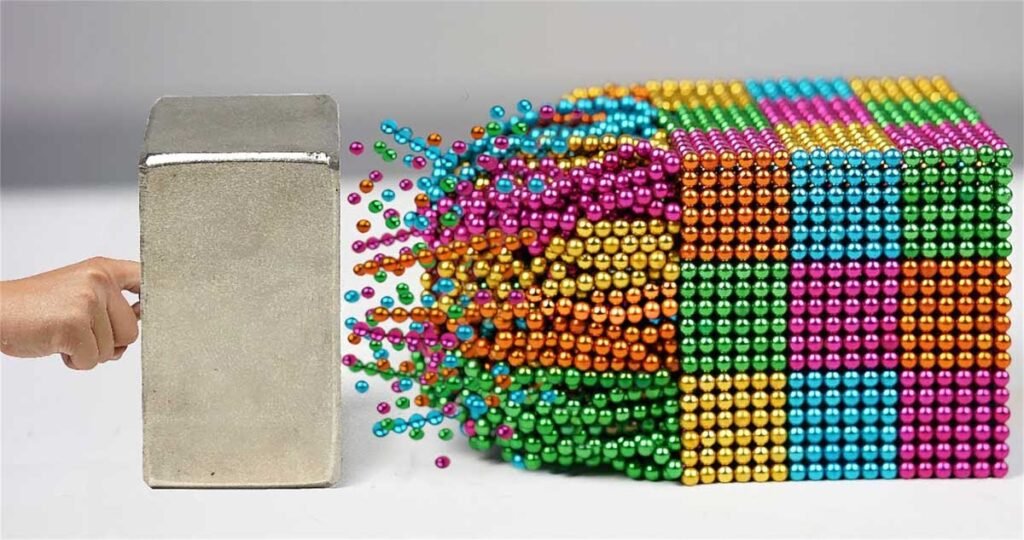
Disadvantages of NdFeB magnets
NdFeB magnets, despite their strong magnetic properties, have several significant disadvantages:
- Brittle Nature: These magnets are prone to cracking and chipping under mechanical stress, limiting their usability in environments with impact or extreme temperatures.
- Corrosion Vulnerability: NdFeB magnets can easily corrode, reducing their magnetic performance over time, especially in high-humidity or marine environments.
- Demagnetization at High Temperatures: These magnets lose their magnetization rapidly at temperatures above 310°C (590°F), making them unsuitable for applications involving elevated temperatures.
- Cost: NdFeB magnets are relatively expensive to produce due to the rare earth elements, such as neodymium, used in their manufacturing process.
- These factors need to be carefully considered when applying NdFeB magnets to specific products.
Uses of NdFeB magnets
Neodymium magnets are revolutionizing magnet technology with their exceptional strength. These magnets, composed of neodymium, iron, and boron, boast a magnetic energy product ranging from 35 to 52 MGOe and a coercivity of around 10,000 Oe. This makes them ideal for a wide range of applications.
Industrial Applications: NdFeB magnets are used in motors, generators, and actuators for efficient and compact designs. They enhance power output in wind turbines and improve performance in electric vehicles.
Consumer Electronics: NdFeB magnets are vital in speakers, headphones, and computer hard drives for high-quality sound and rapid data storage. They enable slim and lightweight designs in smartphones and tablets.
Medical Applications: NdFeB magnets contribute to magnetic resonance imaging (MRI) machines for detailed imaging. They are also utilized in miniature medical devices like sensors and drug delivery systems.
Renewable Energy: NdFeB magnets play a crucial role in wind turbines and electric generators, maximizing energy production and supporting sustainable practices.
NdFeB magnets offer exceptional strength and versatility, driving innovation in industries ranging from manufacturing to healthcare and renewable energy.
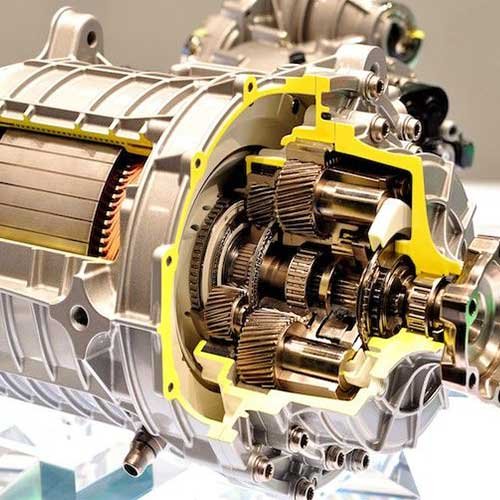
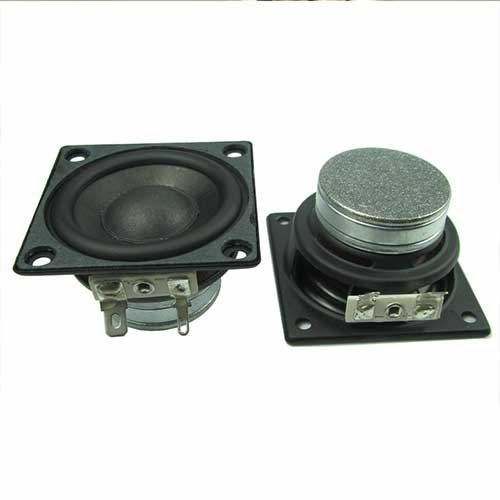
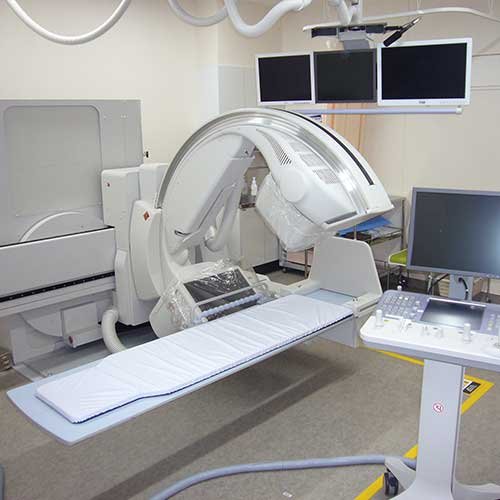
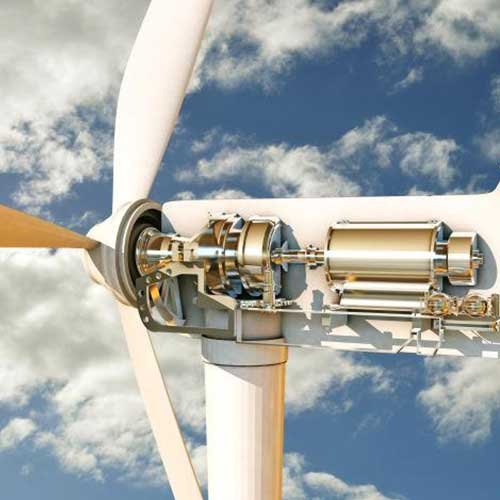
Comparison between NdFeB Magnets and Ferrite Magnets:
| Feature | NdFeB Magnets | Ferrite Magnets |
|---|---|---|
| Magnetic Strength | Very high magnetic strength | Relatively low magnetic strength |
| Energy Product | High | Low |
| Maximum Operating Temp. | Moderate to high (typically up to 200°C) | Low to moderate (typically up to 250°C) |
| Cost | Relatively expensive | Relatively inexpensive |
| Corrosion Resistance | Surface treatment required | Generally resistant to corrosion |
| Manufacturing Process | Complex manufacturing process | Simpler manufacturing process |
| Size and Weight | Small and lightweight | Bulkier and heavier |
| Applications | High-performance motors, speakers, sensors, hard drives, etc. | Loudspeakers, transformers, motors, magnets for education, etc. |
Analysis of Differences and Choices:
Magnetic Strength: NdFeB magnets have a significantly higher magnetic strength compared to ferrite magnets. This makes NdFeB magnets suitable for applications where strong magnetic fields are required, such as high-performance motors and speakers.
Energy Product: NdFeB magnets have a higher energy product, which is a measure of the magnet’s maximum energy density. This allows NdFeB magnets to generate stronger magnetic fields with a smaller volume, making them more efficient in certain applications.
Maximum Operating Temperature: NdFeB magnets have a moderate to high maximum operating temperature, typically up to 200°C. Ferrite magnets, on the other hand, have a lower to moderate maximum operating temperature, typically up to 250°C. The higher temperature tolerance of NdFeB magnets makes them suitable for applications where heat resistance is required.
Cost: NdFeB magnets are relatively expensive compared to ferrite magnets. The complex manufacturing process and the scarcity of the raw materials involved contribute to their higher cost. Ferrite magnets, being less expensive, are often chosen for cost-sensitive applications.
Corrosion Resistance: NdFeB magnets are prone to corrosion if not properly coated or protected. On the other hand, ferrite magnets are generally more resistant to corrosion. This difference in corrosion resistance may influence the choice between the two magnets depending on the specific application and environmental conditions.
Manufacturing Process: The manufacturing process for NdFeB magnets is more complex compared to ferrite magnets. The production of NdFeB magnets involves sintering and subsequent processing steps, whereas ferrite magnets are relatively simpler to manufacture. The complexity of the manufacturing process can impact production costs and lead times.
Size and Weight: NdFeB magnets are known for their high magnetic strength relative to their size and weight. This makes them suitable for applications where compact and lightweight solutions are desired. Ferrite magnets, although bulkier and heavier, can still provide adequate magnetic performance for less weight-sensitive applications.
NdFeB magnets offer superior magnetic strength, higher energy product, and better temperature resistance compared to ferrite magnets. However, their higher cost, susceptibility to corrosion, and more complex manufacturing process may make ferrite magnets a preferable choice in certain cost-sensitive or corrosion-prone applications. The specific requirements and constraints of each application should be carefully considered when selecting between these two types of magnets.
Magnetic Properties:
NdFeB Magnet:
Magnetic Strength: Up to 1.4 Tesla
Coercivity: 800 – 1500 kA/m
Energy Product: Up to 400 kJ/m³
Ferrite Magnet:
Magnetic Strength: Up to 0.45 Tesla
Coercivity: 120 – 320 kA/m
Energy Product: Up to 40 kJ/m³
Cost-effectiveness:
NdFeB Magnet:
Average Price: $30 – $40 per kilogram
Ferrite Magnet:
Average Price: $5 – $10 per kilogram
In conclusion, NdFeB magnets and ferrite magnets each have their advantages and trade-offs. The selection should be based on a thorough evaluation of factors such as magnetic properties, cost-effectiveness, and environmental impact. Considering the specific application requirements will lead to an informed decision that optimally balances performance, affordability, and sustainability.
Consulting with GP Magnets manufacturers can provide further guidance based on the desired performance, cost-effectiveness, and environmental impact.
